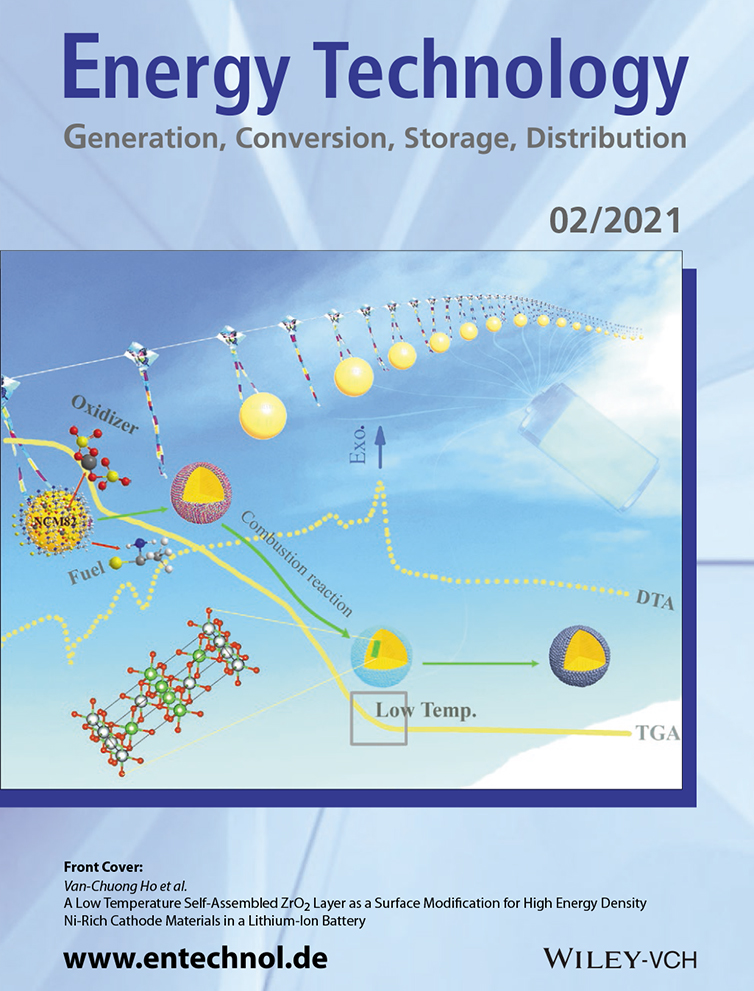Hydrogen-Bromine Redox-Flow Battery Cycling with Bromine Complexing Agent: on the Benefits of Nanoporous Separator Versus Proton Exchange Membrane
Abstract
The reversible and fast redox kinetics of bromine/bromide makes it a desirable couple as a catholyte in redox-flow batteries (RFBs). In principle, the highest possible energy density is obtained with hydrogen-bromine RFBs. Bromine sequestration agents, also called bromine complexing agents (BCAs), bind bromine in a non-miscible phase and can, therefore, reduce the vapor pressure of bromine, mitigate its crossover, and result in higher practical range of electrolyte concentration. Therefore, BCAs can enhance the battery's safety and competitivity by significantly decreasing the cost of components. To date, BCAs are commonly used in membrane-free bromine systems, which cannot provide the high current density demonstrated in hydrogen-bromine RFBs. Herein, the drastic limitations encountered are shown while operating a hydrogen-bromine RFB with a standard perfluorinated sulfonic acid membrane due to the strong BCA–perfluorinated sulfonic acid interaction. On the other hand, the benefits of using a polyvinylidene difluoride-silica (PVDF–SiO2) nanoporous separator are demonstrated, which does not interact with the BCA. In this approach, the hydrogen-bromine RFB can sustain cycling, albeit at a more moderate current than a BCA-free battery.
Conflict of Interest
The authors declare no conflict of interest.




